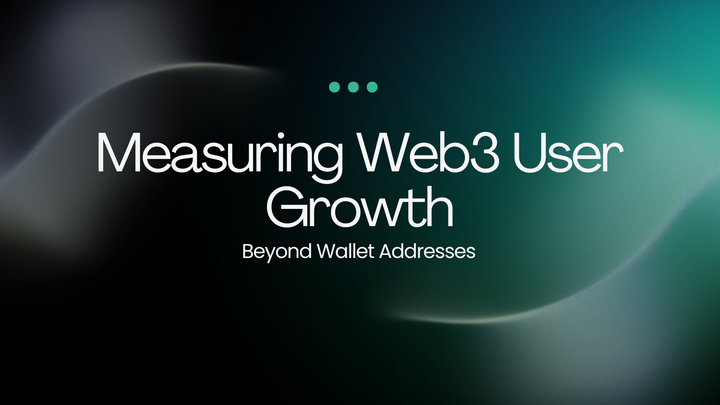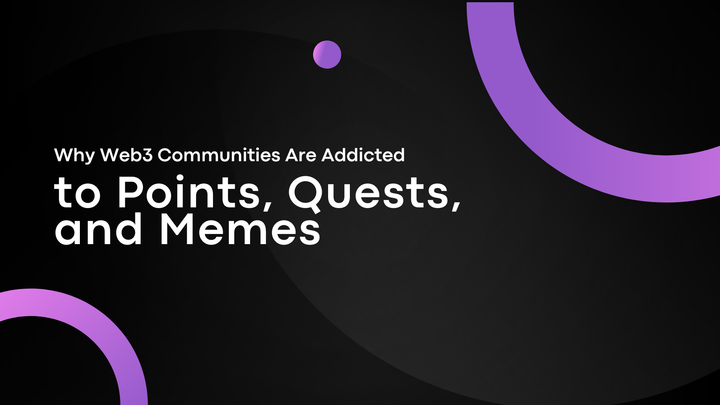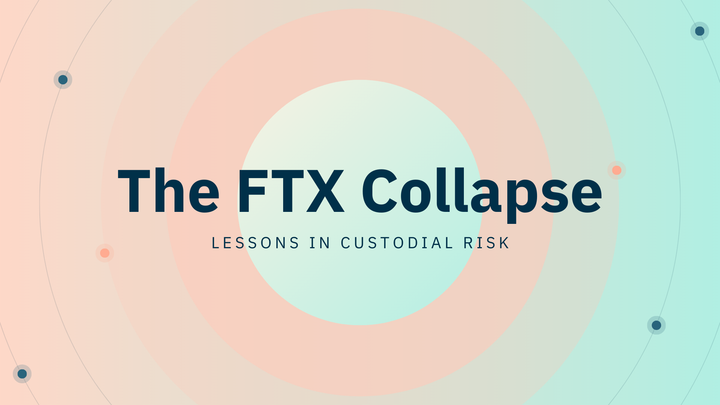The Mitosis Liquidity Protocol: A Novel Approach to Cross-Chain Interoperability
Introduction: The Challenge of Cross-Chain Liquidity and the Emergence of Mitosis
The decentralized finance (DeFi) landscape is characterized by an increasing number of blockchain networks, each with its own unique features and communities. This expansion, particularly with the rise of Layer 2 scaling solutions on platforms like Ethereum, has led to a significant challenge: the fragmentation of liquidity across numerous independent blockchain networks. While these Layer 2 solutions offer improvements in transaction speed and cost, they inherently create distinct environments where assets can become isolated, hindering the seamless flow of capital within the DeFi ecosystem.
This scattering of liquidity presents several obstacles for both users and developers in the DeFi space. Traders may encounter larger price fluctuations for their trades, known as slippage, and find it more difficult to execute substantial orders at their desired prices. Furthermore, the fragmented nature of liquidity can reduce the overall efficiency of capital, as assets locked on one chain may not be readily accessible for opportunities on another. Consequently, the development of efficient cross-chain liquidity solutions has become a critical imperative for the continued advancement and widespread adoption of DeFi. Without the ability to easily move and utilize assets across different blockchain networks, the potential for DeFi to establish a truly interconnected and efficient global financial system is significantly limited.
The emergence of modular blockchains, where different layers within a blockchain handle specific functions such as execution, data availability, and settlement, introduces another layer of complexity to the challenge of liquidity. This separation, while offering substantial benefits in terms of scalability and customization, inherently creates more distinct environments where liquidity can become siloed. Addressing this emerging challenge directly is the Mitosis liquidity protocol. Mitosis proposes a new, capital-efficient paradigm in cross-chain interoperability specifically designed to function within this evolving modular blockchain ecosystem. Its primary aim is to streamline the process of providing liquidity across these different chains, making it simpler and more effective for both users and developers involved in the modular landscape.
The name of the protocol, "Mitosis" , draws inspiration from the biological process of cell division. Just as a cell undergoes mitosis to divide into two identical daughter cells, the Mitosis protocol is designed to divide and manage liquidity pools into smaller, more manageable segments, often referred to as "cells". This modular approach seeks to establish a dynamic ecosystem where liquidity can readily adapt to varying demands and opportunities within the decentralized finance space. This inherent adaptability is seen as crucial for navigating the rapidly changing and increasingly complex world of DeFi.
What is the Mitosis Liquidity Protocol? Core Concepts and Goals
The Mitosis protocol can be defined as a Layer 1 blockchain specifically engineered to enhance decentralized finance through the introduction of Ecosystem Owned Liquidity (EOL) to the burgeoning ecosystem of modular blockchains and their decentralized applications (dApps). This foundational layer of the protocol is intended to provide the necessary infrastructure for the efficient management of liquidity across different blockchain networks. By focusing on this fundamental aspect of DeFi, Mitosis aims to contribute to a more interconnected and efficient financial ecosystem.
At the heart of the Mitosis protocol lies the core concept of Ecosystem-Owned Liquidity (EOL). This represents a novel approach to liquidity management within DeFi, emphasizing a community-driven model facilitated through a Decentralized Autonomous Organization (DAO) structure. This governance framework ensures that the community of users plays a significant and active role in shaping the operation and direction of the protocol. The primary goal of EOL is to empower retail liquidity providers by enabling them to pool their assets and, through the DAO, achieve a level of influence and access to opportunities that were previously more aligned with institutional-scale investors. By aggregating the resources of many individual users, EOL aims to democratize access to liquidity provision and its associated benefits within the DeFi space.
The Mitosis protocol is driven by several key objectives. Firstly, it aims to significantly increase the Total Value Locked (TVL) within new modular blockchains and their decentralized applications, thereby fostering the growth and adoption of these emerging ecosystems. Secondly, the protocol strives to establish a paradigm of capital efficiency in the realm of cross-chain interoperability , seeking to optimize the utilization of assets across different blockchain networks rather than allowing them to remain fragmented and underutilized. Finally, Mitosis is committed to supporting permissionless interoperability , with the ultimate goal of allowing users to seamlessly access liquidity and various DeFi protocols on any blockchain network at any time, creating a truly interconnected and accessible decentralized financial landscape.
Understanding Key Components of Mitosis
- 3.1. miAssets: Cross-Chain Liquidity TokensThe Mitosis protocol introduces a fundamental component known as miAssets. These are tokens that are issued to users in a 1:1 ratio to the assets they deposit into the protocol. For instance, a user depositing one unit of Ether might receive one unit of a corresponding miAsset, although the specific ticker symbol and underlying mechanics would be determined by the protocol's implementation. These miAssets serve as a crucial mechanism for facilitating cross-chain liquidity, enabling users to deploy their assets across various DeFi ecosystems and earn revenue generated from cross-chain transactions. Because miAssets can represent the value of an underlying asset on multiple different blockchain networks, they empower users to engage in DeFi activities such as lending or trading on networks where their original asset might not have native availability. This unlocks new possibilities for capital deployment and yield generation within the decentralized finance space. A key feature of miAssets is their ability to move between different blockchain networks without requiring complex permissions. This permissionless movement is facilitated by interoperability protocols such as Hyperlane. By leveraging such protocols, miAssets can be transferred across different chains without the need for centralized bridges or cumbersome asset wrapping procedures. This ease of movement is essential for achieving seamless cross-chain liquidity and enhancing the overall user experience within the DeFi ecosystem. The ability for miAssets to function as liquid representations of value across multiple chains significantly increases their utility and potential within the decentralized finance landscape.
- 3.2. Mitosis Vaults: Pooling Liquidity and Earning YieldsThe primary mechanism for aggregating liquidity from individual users within the Mitosis protocol is through the use of Mitosis Vaults. These vaults function as the central pools where users can deposit their digital assets. The structure and operation of these vaults are governed by the protocol's DAO, ensuring a community-driven approach to liquidity management. For example, users can deposit assets like weETH (wrapped Ether.fi Ether) into designated Mitosis vaults and, in return, receive corresponding miAssets such as miweETH. These miAssets not only represent the user's share of the pooled liquidity within the vault but also grant them voting rights within the governance framework of that specific liquidity pool. Users who participate in these Mitosis Vaults are incentivized through the opportunity to earn multi-chain yields as rewards. These yields are generated from the various decentralized finance activities and protocols where the pooled liquidity is strategically deployed. The specific yield opportunities and the allocation of assets are often determined through the governance processes of the Mitosis DAO, ensuring that the community has a say in how the pooled capital is utilized to maximize returns. Furthermore, the creation of new vaults within the Mitosis ecosystem is a community-driven process. Protocols or community members interested in establishing a new vault must engage in discussions on the Mitosis forum and subsequently pass a community vote before the vault is officially approved and made available on the Mitosis platform. This ensures that the growth and development of the protocol's liquidity pools are aligned with the interests and needs of its users.
- 3.3.DAO Governance: Community-Driven Decision MakingGovernance within the Mitosis protocol is primarily managed through a Decentralized Autonomous Organization (DAO). This DAO structure is fundamental to the protocol's commitment to decentralization and community ownership. A key aspect of the Mitosis DAO is the granting of voting rights to holders of miAssets, such as miweETH, within the governance framework of the specific liquidity pool to which they have contributed. This mechanism ensures that individuals who provide liquidity to the protocol have a direct say in its operation and future direction. The(https://support.bitrue.com/hc/en-001/articles/41380420224153-Mitosis-Airdrop-How-to-Earn-MITO-Points-and-Unlock-Rewards) plays a crucial role in facilitating decisions regarding asset allocation strategies, with the overarching goal of achieving optimal returns for the liquidity providers. Through the DAO's voting processes, Mitosis LPs actively participate in determining how the pooled liquidity is deployed across various yield-generating opportunities within the decentralized finance landscape. This community-driven approach to asset management aims to ensure that the strategies employed are aligned with the collective interests of the protocol's users and are geared towards maximizing their earnings potential. This model of governance, where those who contribute the most to the protocol also have the most influence over its direction, is a cornerstone of the Mitosis philosophy.
Mitosis and Cross-Chain Interoperability: Leveraging Morse and Hyperlane
A central objective of the Mitosis protocol is to enable seamless transfers of both assets and data between different blockchain networks. This capability is fundamental to its core function of providing unified liquidity within the increasingly complex modular blockchain ecosystem. To achieve this crucial interoperability, Mitosis employs a combination of its own bridging mechanism, known as Morse, and an external, universal interoperability layer, Hyperlane.
Morse serves as the internal bridge within the Mitosis ecosystem, playing a vital role in facilitating secure transfers of data and assets between various blockchain networks that Mitosis integrates with. This internal bridging solution is likely optimized for specific types of interactions and data exchange that are essential for the core functionality of the Mitosis protocol. By providing this internal communication layer, Morse ensures efficient and reliable connectivity across the different components and functionalities within the Mitosis framework.
In addition to Morse, the Mitosis protocol leverages the Hyperlane protocol to achieve permissionless interoperability. Hyperlane acts as a universal, permissionless interoperability layer for the modular blockchain stack, enabling seamless communication across a wide range of different blockchains. This integration allows for the free movement of miAssets between various blockchain networks without the need for complex permissions or reliance on centralized intermediaries.By utilizing Hyperlane, Mitosis can connect with a broad spectrum of blockchain ecosystems that have also integrated this interoperability standard, significantly expanding the reach and utility of miAssets and the overall Mitosis protocol.
The Significance of Ecosystem-Owned Liquidity (EOL)
The concept of Ecosystem-Owned Liquidity (EOL) is of paramount importance to the Mitosis protocol and offers a range of significant benefits for both liquidity providers and the broader decentralized finance ecosystem. For liquidity providers, EOL provides a mechanism for increased bargaining power by aggregating their assets into larger pools, potentially allowing them to negotiate more favorable terms and access higher yields compared to providing liquidity individually. Furthermore, LPs who participate in the Mitosis ecosystem gain the opportunity to actively engage in the protocol's governance through the DAO, enabling them to influence asset allocation strategies and strive for optimal returns on their deposited capital across various DeFi opportunities. This active involvement in decision-making empowers users and aligns their interests with the overall success of the protocol. Additionally, the rewards generated by the Mitosis Vaults are distributed to all Mitosis Ecosystem LPs across all the blockchain networks supported by the protocol, providing them with exposure to multi-chain yields and diversifying their potential earnings.
For protocols within the decentralized finance space, EOL as implemented by Mitosis offers substantial advantages.These protocols can actively participate within the Mitosis EOL community to directly market their offerings to a pool of engaged and incentivized liquidity providers. This provides a more efficient and targeted approach to liquidity procurement compared to relying solely on potentially expensive and less sustainable incentive programs aimed at attracting mercenary capital. By fostering a direct relationship between protocols and a community of aligned liquidity providers, EOL can contribute to a more stable and robust DeFi ecosystem. Moreover, EOL is designed to cultivate an efficient market environment characterized by symmetric and transparent information. All participants within the Mitosis ecosystem have access to clear and comprehensive information regarding asset allocation, yield performance, and the overall functioning of the protocol. This transparency promotes fair and informed decision-making, reducing information asymmetry and fostering greater trust among users. Ultimately, the efficient and community-driven nature of the EOL model is intended to support the long-term scalability of the Mitosis protocol. By establishing a sustainable and robust foundation of community-owned liquidity, Mitosis aims to adapt and grow alongside the evolving modular blockchain ecosystem, providing a critical infrastructure component for the future of decentralized finance.
Integration Strategies and Use Cases
The Mitosis protocol is specifically designed to facilitate seamless integration with a wide range of existing DeFi platforms and protocols, aiming to enhance their functionality and expand their reach. Its innovative ecosystem-owned liquidity model has the potential to serve as a novel and readily accessible source of liquidity for various DeFi applications currently operating within the modular blockchain landscape. For instance, lending protocols could integrate with Mitosis to access a deeper pool of capital, potentially leading to more competitive interest rates for borrowers and lenders. Similarly, decentralized exchanges (DEXs) could leverage Mitosis to enhance their liquidity pools, resulting in reduced slippage and a more efficient trading experience for their users. Furthermore, yield aggregators could incorporate Mitosis to offer their users access to the multi-chain yields generated within the protocol's vaults, thereby expanding the range of earning opportunities available on their platforms. The existing integration with OKX Wallet demonstrates the protocol's commitment to user accessibility and its potential for widespread adoption within the DeFi community.
The miAssets, which are central to the Mitosis protocol, offer a diverse array of potential use cases within the decentralized finance ecosystem. Their ability to represent underlying assets on a 1:1 basis and move permissionlessly between different blockchain networks unlocks numerous possibilities for enhancing capital efficiency and creating new financial instruments. For example, miAssets could be utilized as collateral within lending protocols operating on different chains, allowing users to leverage their assets across multiple networks to access loans. They also hold significant potential for cross-chain yield farming strategies, enabling users to deploy their miAssets in various yield-generating protocols across different blockchains, thereby maximizing their earning potential. Moreover, the unique properties of miAssets could even extend to participation in cross-chain governance mechanisms, allowing holders to exert influence over protocols and DAOs operating on networks other than the one where their original asset resides. This versatility positions miAssets as a powerful tool for fostering greater composability and interoperability within the decentralized finance space.
Mitosis and the Cypherpunk Ethos
The core principles underpinning the Mitosis protocol exhibit a strong alignment with the broader vision of decentralization, permissionless participation, and community governance that are central to the cypherpunk philosophy.The protocol's fundamental emphasis on DAO governance and the concept of community-owned liquidity directly reflects the cypherpunk ideal of shifting power away from centralized entities and empowering individual users within the digital realm. By placing control over liquidity and key protocol decisions in the hands of the community, Mitosis embodies the cypherpunk ethos of self-sovereignty and resistance to centralized control. Furthermore, the permissionless nature of cross-chain interoperability facilitated by the integration of Hyperlane within Mitosis resonates deeply with the cypherpunk principle of open access. The ability for anyone to participate in the cross-chain ecosystem without requiring specific permissions from a central authority aligns with the cypherpunk commitment to an open and unrestricted digital space.
Vitalik Buterin, a prominent figure in the blockchain and Ethereum communities, has frequently emphasized the importance of returning to the foundational "cypherpunk" values within the Ethereum ecosystem. His vision includes a renewed focus on principles such as decentralization, open participation, and censorship resistance, advocating for a move away from unchecked centralization and an overemphasis on purely financial applications within the blockchain space. In this context, the Mitosis protocol can be seen as contributing to this broader vision by prioritizing community-owned liquidity and permissionless interoperability. By empowering users to maintain control over their digital assets and participate in cross-chain activities without being subject to potentially censorable or rent-seeking intermediaries, Mitosis aligns with the core tenets of the cypherpunk movement's pursuit of individual empowerment within the digital realm. While Mitosis's primary focus lies in liquidity and interoperability rather than direct privacy enhancements (a significant aspect of the original cypherpunk agenda), its strong emphasis on decentralization and community control reflects a fundamental alignment with the broader cypherpunk ethos of empowering individuals within the digital landscape.
Conclusion: The Potential Impact of the Mitosis Liquidity Protocol
In summary, the Mitosis liquidity protocol presents a compelling and innovative approach to addressing the growing challenges of cross-chain liquidity fragmentation within the evolving modular blockchain landscape. Its core Ecosystem-Owned Liquidity (EOL) model, facilitated by community-driven DAO governance and the use of miAssets for cross-chain value representation, offers a novel framework for empowering liquidity providers and fostering a more interconnected decentralized finance ecosystem. By leveraging its internal bridging mechanism, Morse, and the universal interoperability layer provided by Hyperlane, Mitosis aims to enable seamless and permissionless asset and data transfers across a wide range of blockchain networks. This robust approach to interoperability, combined with the benefits of EOL for both liquidity providers and protocols, positions Mitosis as a significant development with the potential to unify liquidity and enhance capital efficiency in the increasingly multi-chain world of DeFi. Ultimately, the Mitosis protocol'scommitment to decentralization, community empowerment, and open access to cross-chain liquidity aligns with the foundational principles of the blockchain space and suggests a promising future for its role in shaping the next generation of decentralized finance.



Comments ()